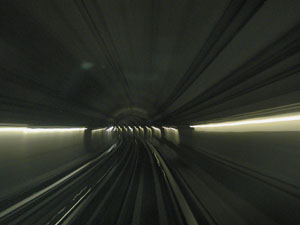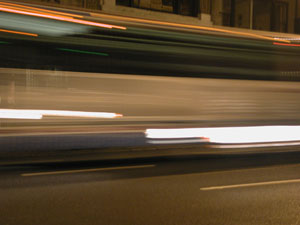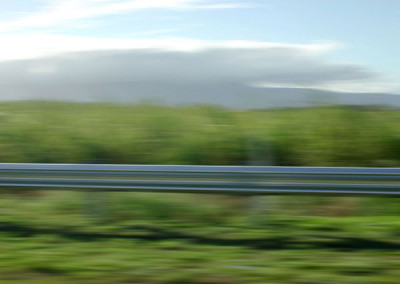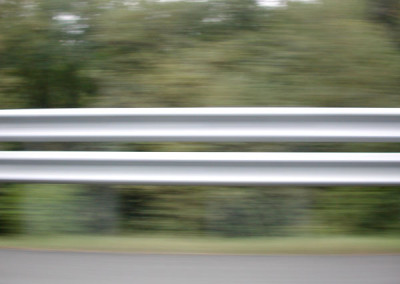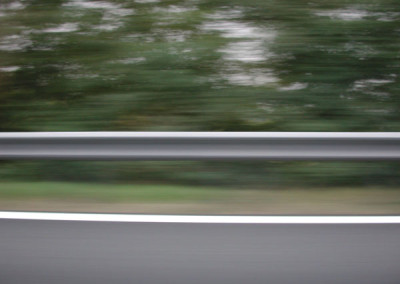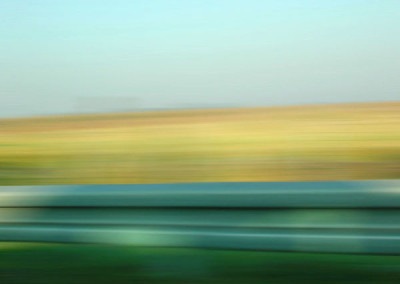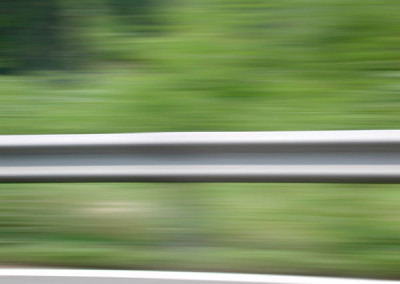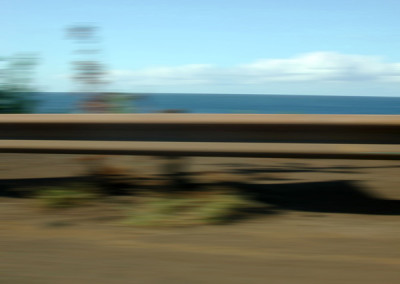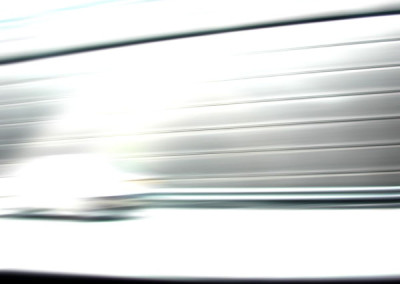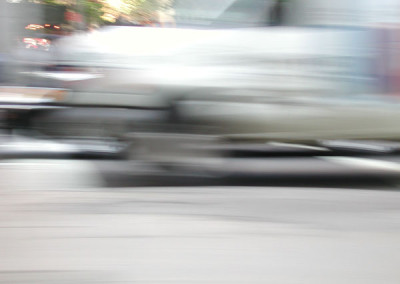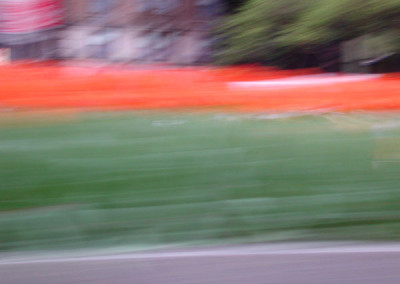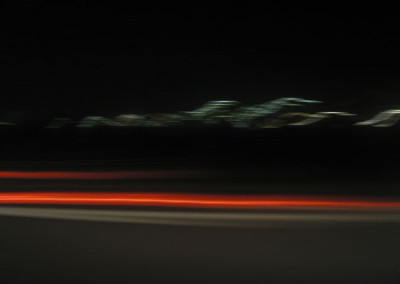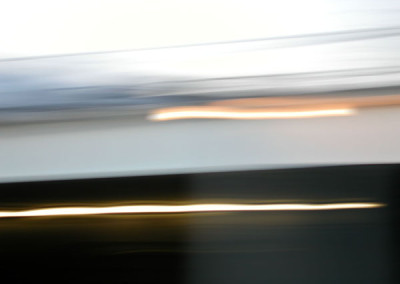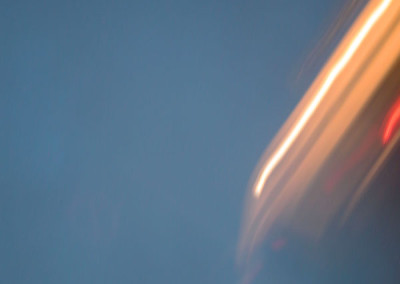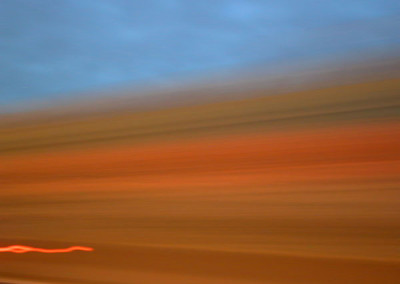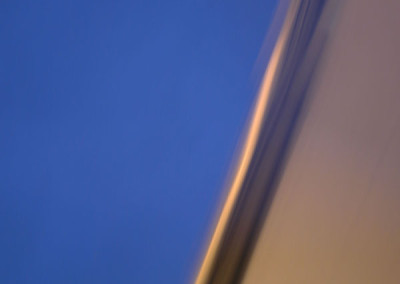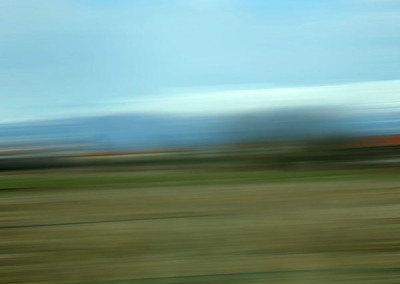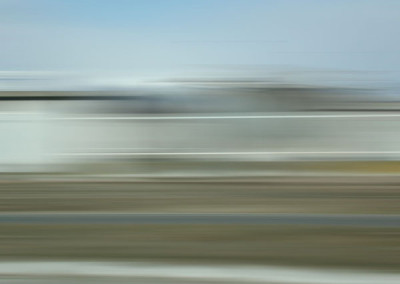My photography
Velocité
January 23-31, 2003 Gallery Machine Simple, Paris
We are in a particular age of photography that will last, at most, another 5 years. The current state of consumer digital photography is still quite primitive and, as a result, consumers are frustrated with artifacts in their photographs that are a result of the low fidelity and inexpensive components. These include miss-timing, jagged digitization, artificially-contrasted boundaries, and blur. I choose to play with these artifacts and explore them in my work—to use them as a feature instead of a bug—because these artifacts that others work to avoid actually have their own intrinsic beauty.
My recent work has focused particularly on blur because, I believe, that the quintessential experience for us as we move from the 20th to the 21st Century is one of speed. Our lives are increasingly lived at speeds that offer us a unique perspective on the world. While traditional details may be more difficult to see, by viewing our world in movement and not at rest, we have the opportunity to see things only possible at speed. While it may be difficult to understand the world in detail from a moving point in time and space, as with a differential equation, there are some things you can only see in a compounded, meta-view, from far away, or as a function of speed over distance. While many complain about “the world moving too fast” and “everything accelerating,” I actually find a beauty in velocity and blur and in the patterns formed at speed.
Speed of Life
August 19- October 31, 2004 Harkness Auditorium, USC Institute for Genetic Medicine, Los Angeles
This is a sub-set of my original Velocité show as part of a group show called Evolving Perception. A new piece in video is included as is an accompanying lecture on September 9, 2004.
An expanded version of this show moved to USC’s AIM*SPACE from November 6, 2003 to December 10, 2003.
After Image
Continuing my theme of speed and blur, these images are accelerated even more. The references to location and subject become further abstracted into saturated color, dynamic form, and stark composition. What intrigues me about these is their relation to detailed visions of location photography and how abstracted references can still suggest the time and place of our experiences. This is increasingly how we travel: faster speeds, less consideration, more variety. We even refer to our travel as “blurs” because the details seem so immemorable with so much stimulation. This series explores the abstraction of place through the use of digital photography. These are landscapes transformed into expressive abstract compositions.
